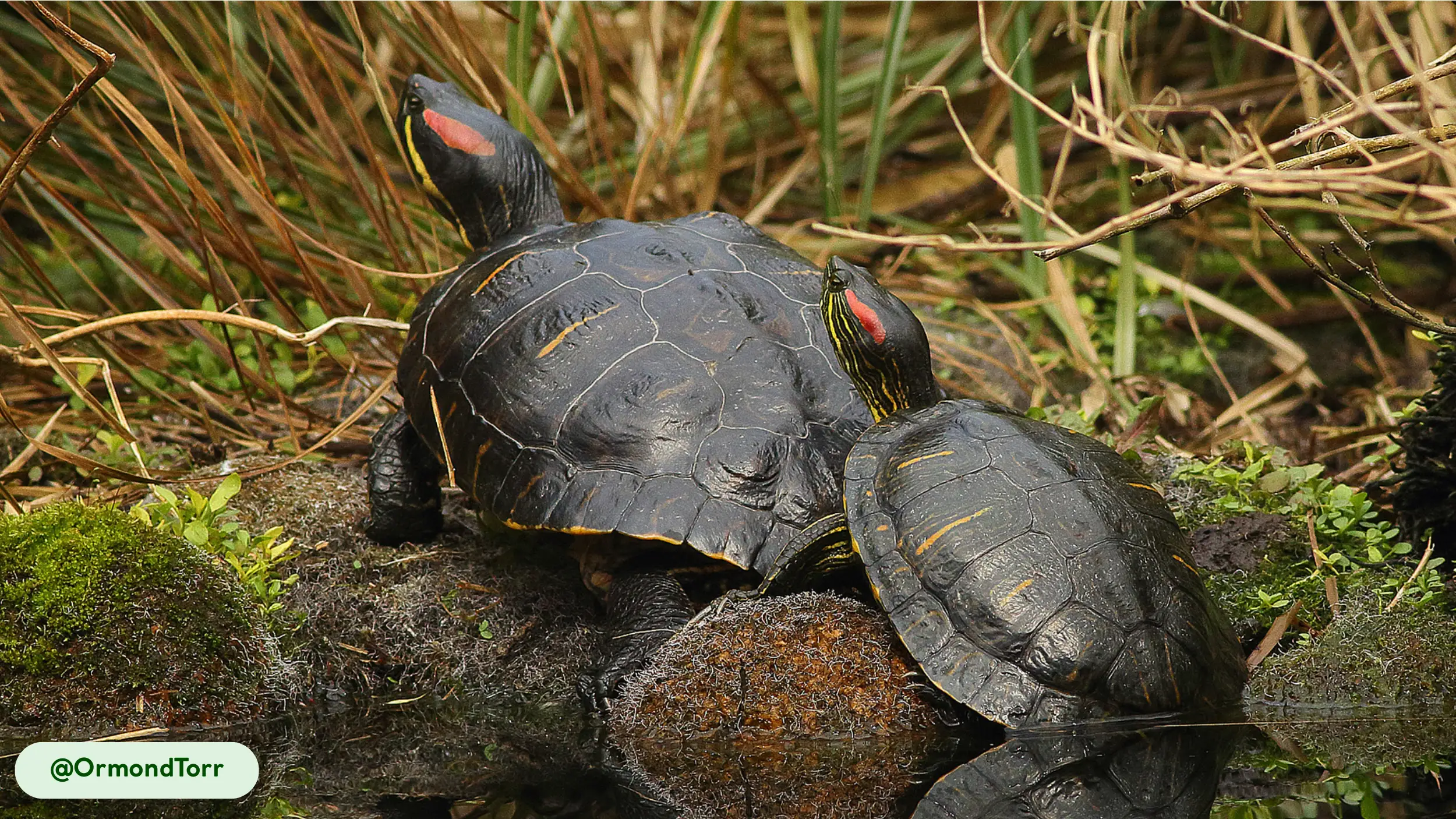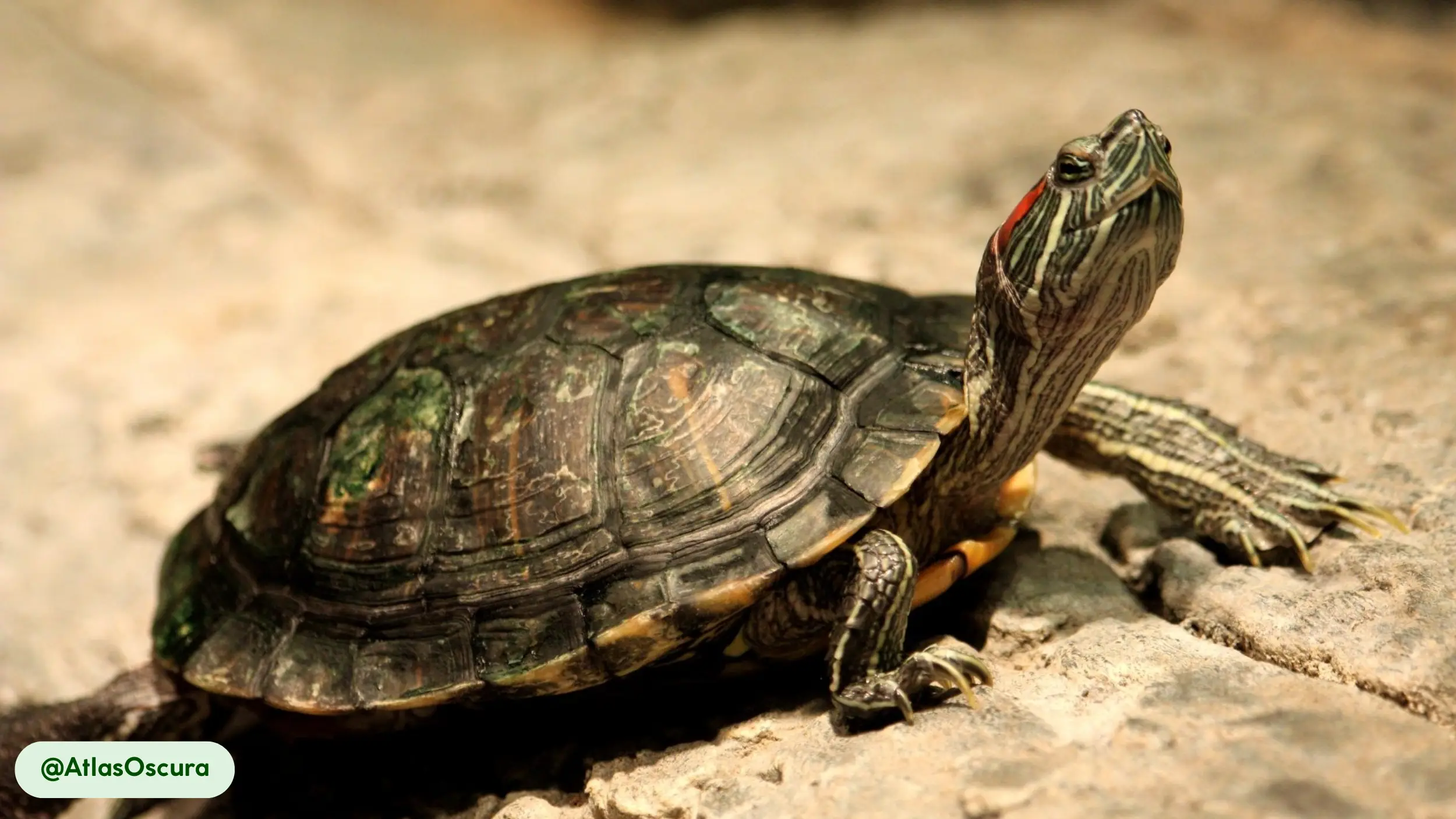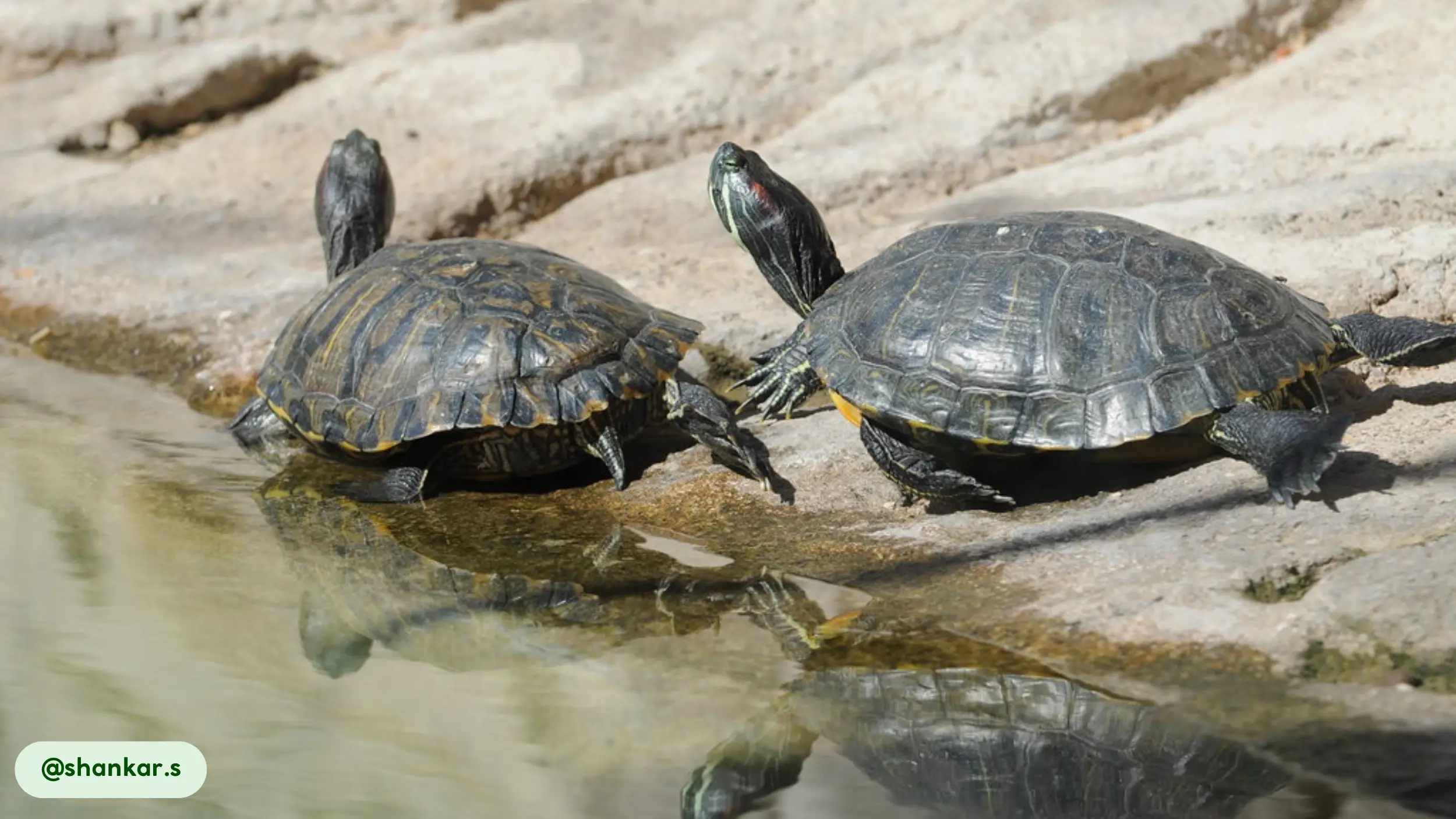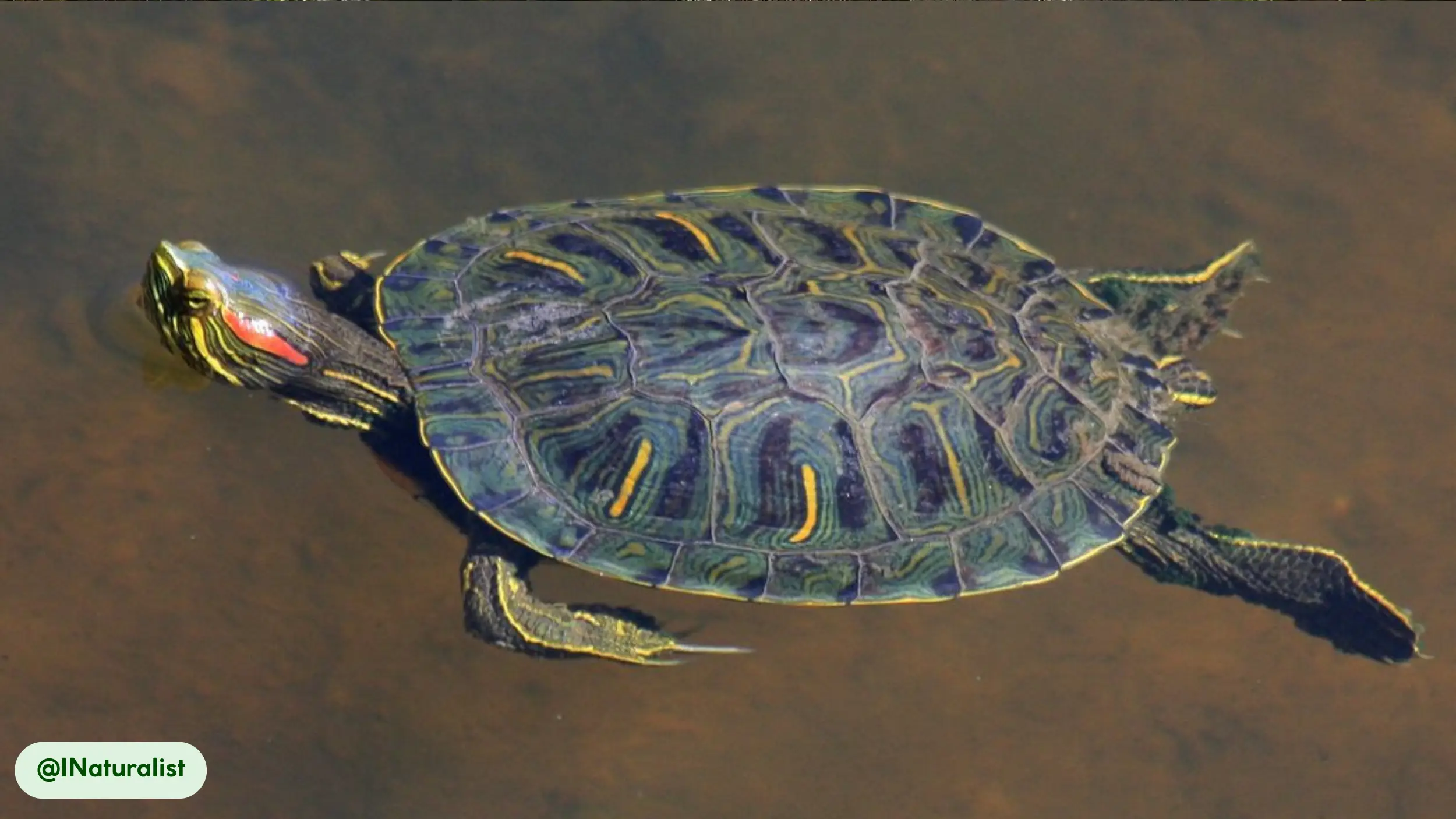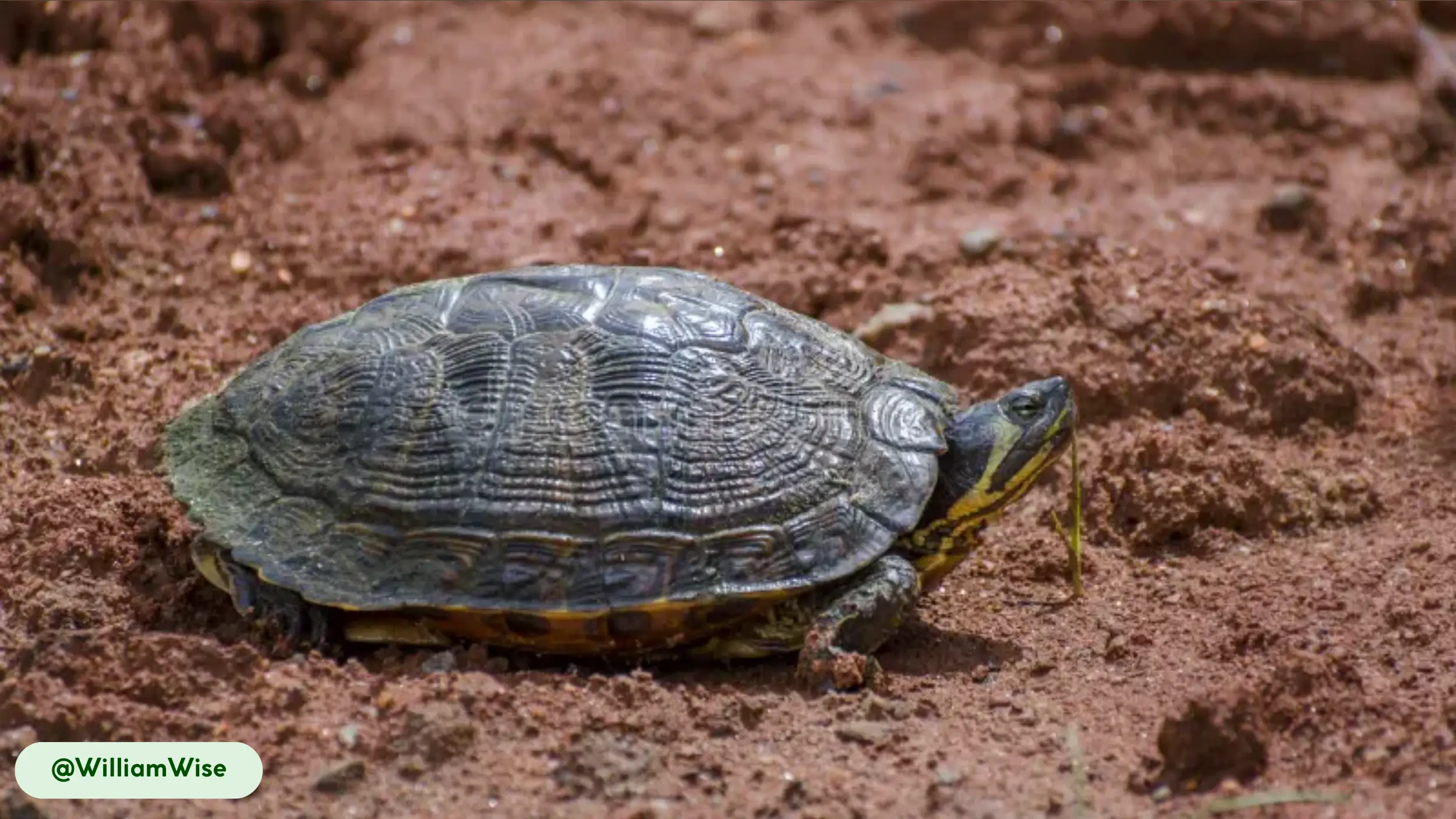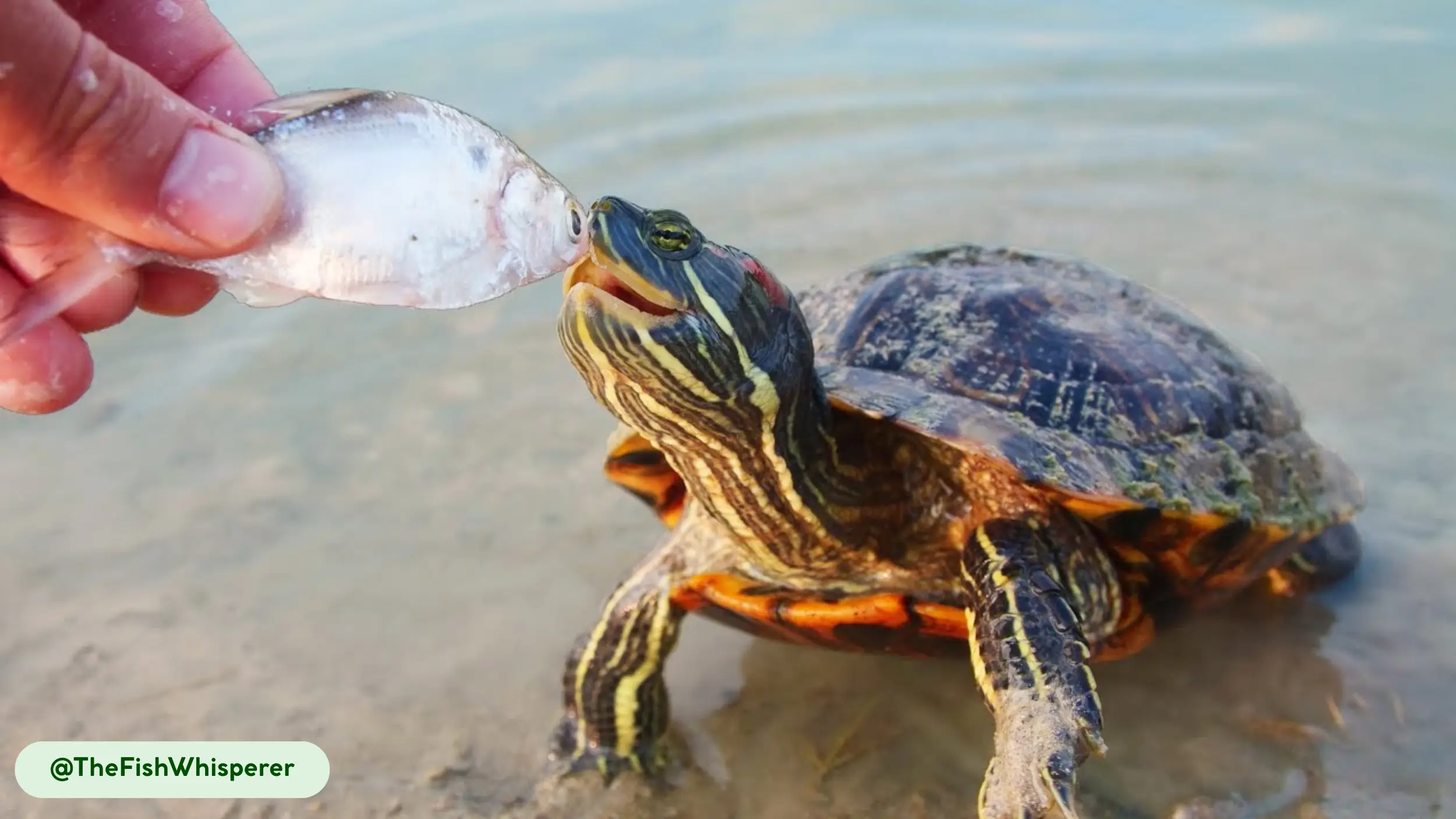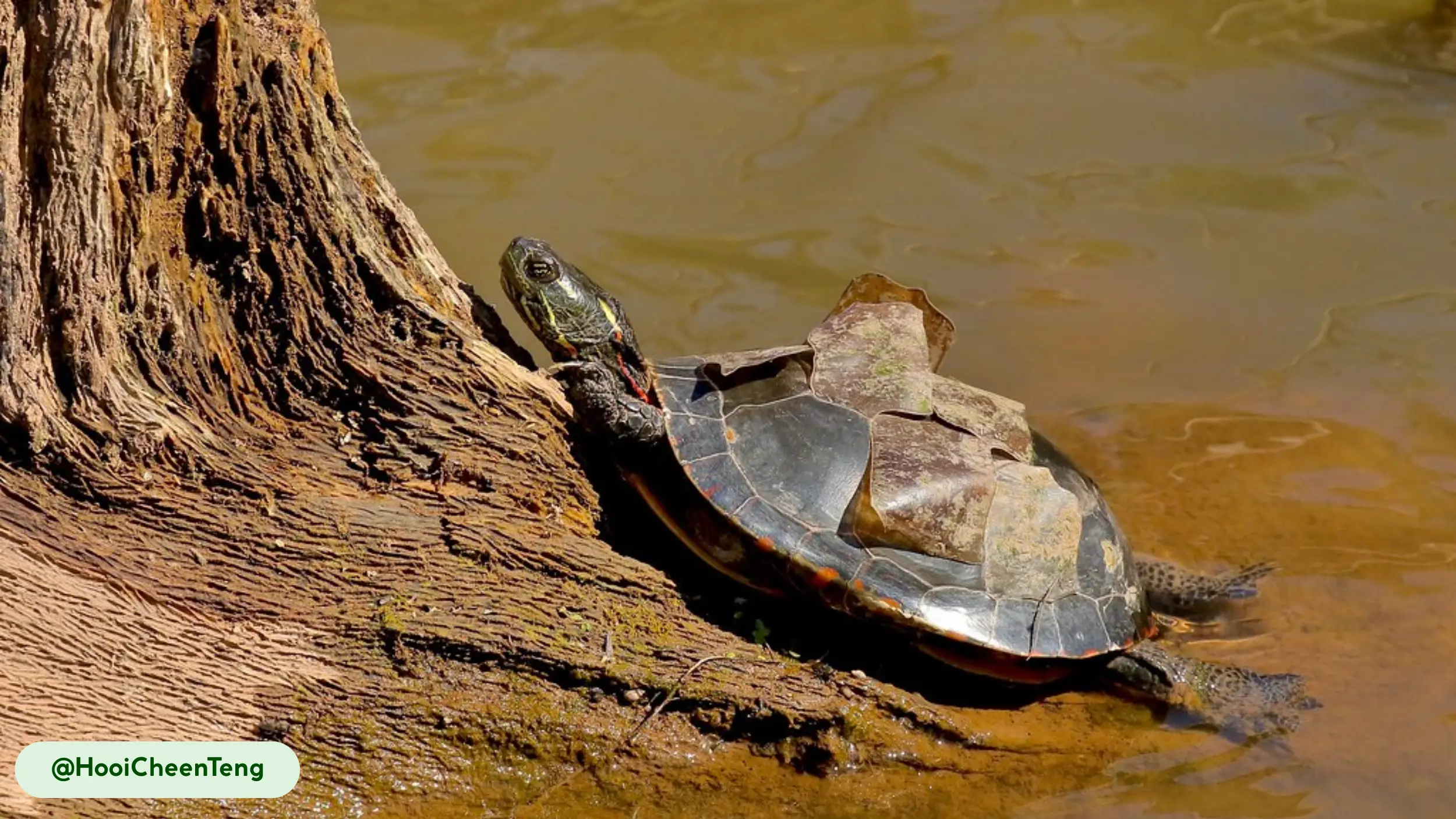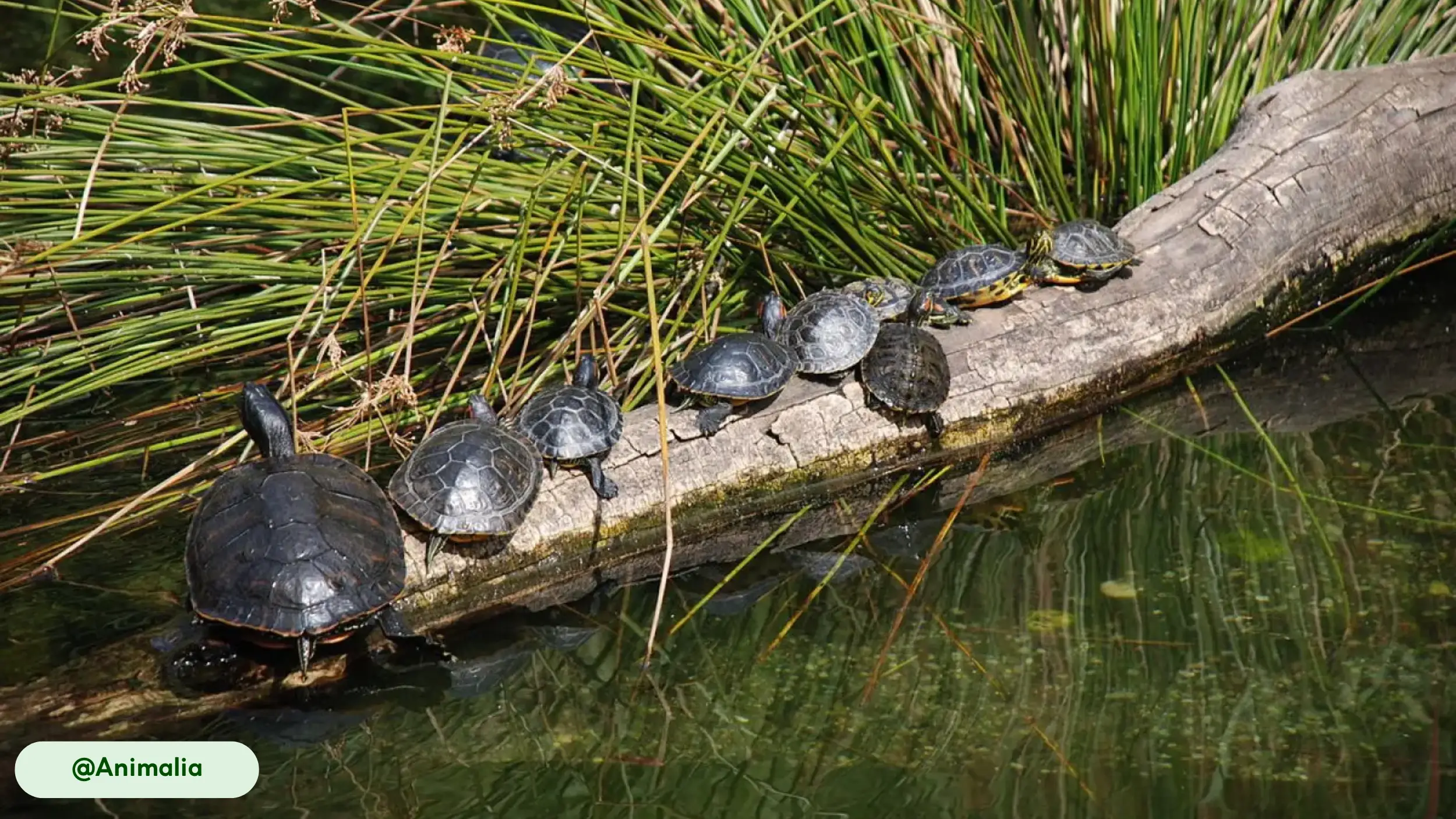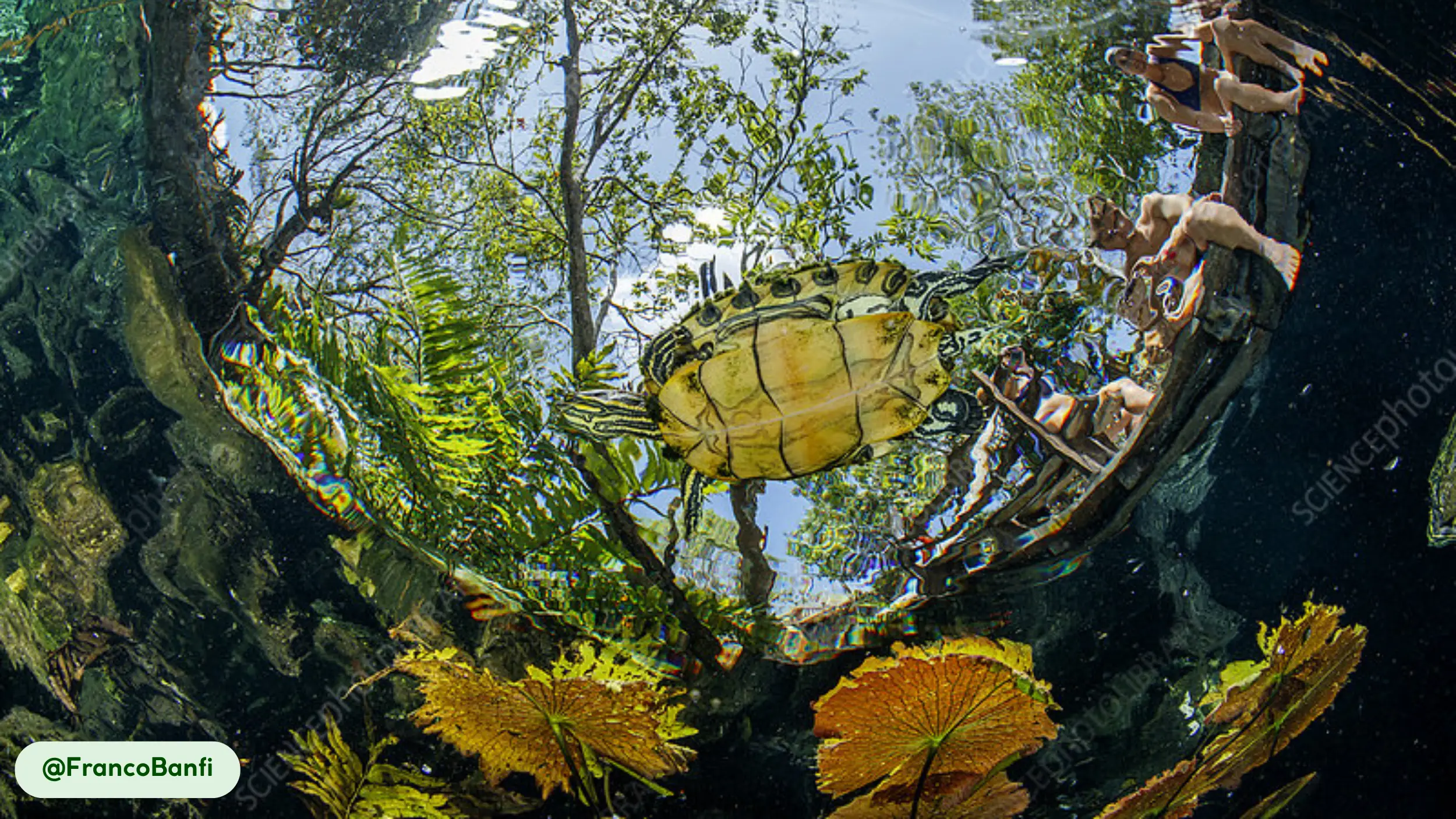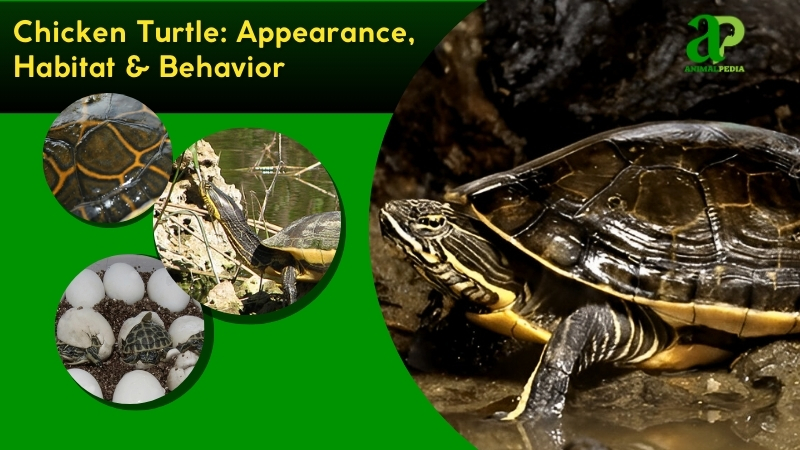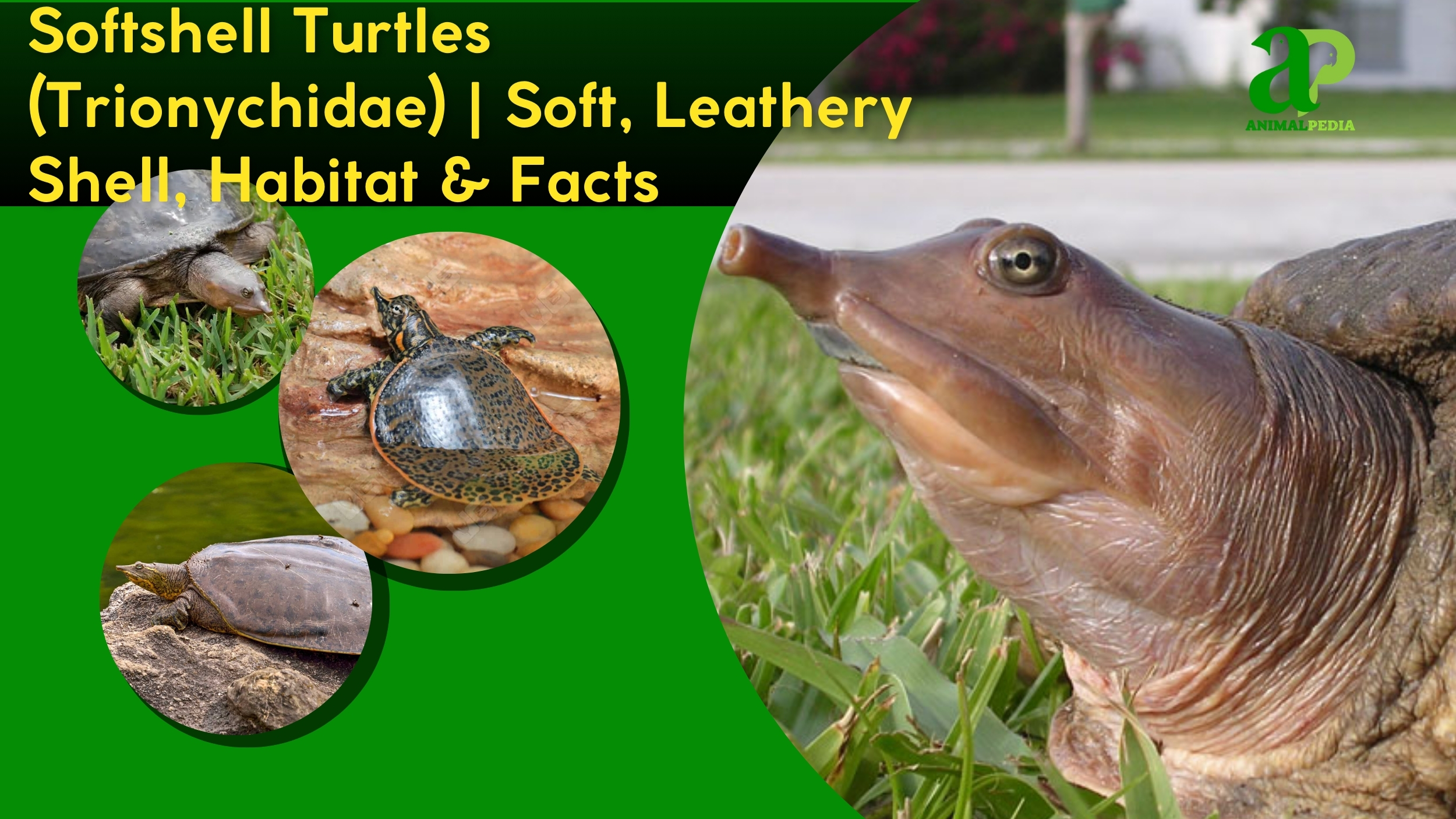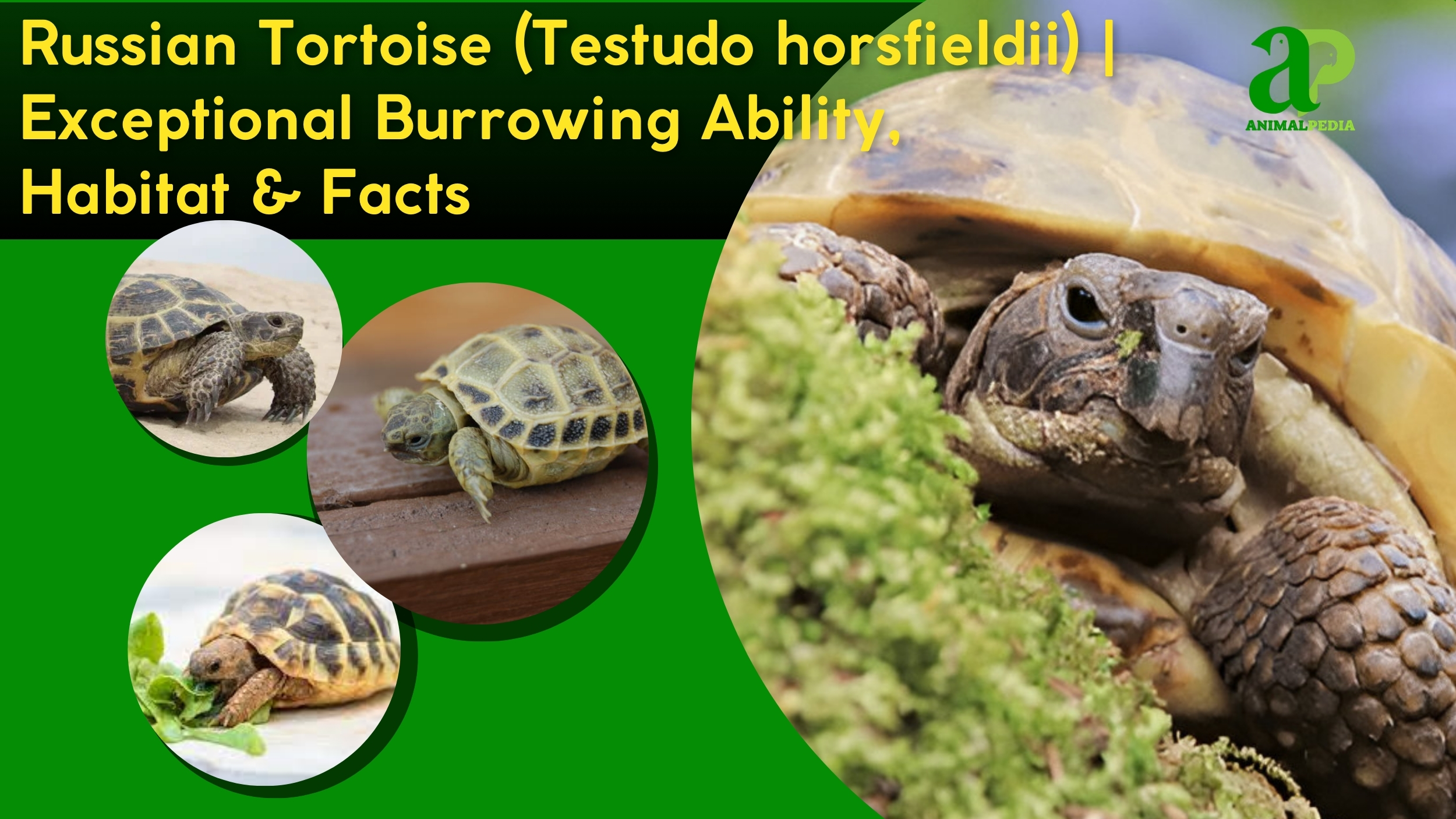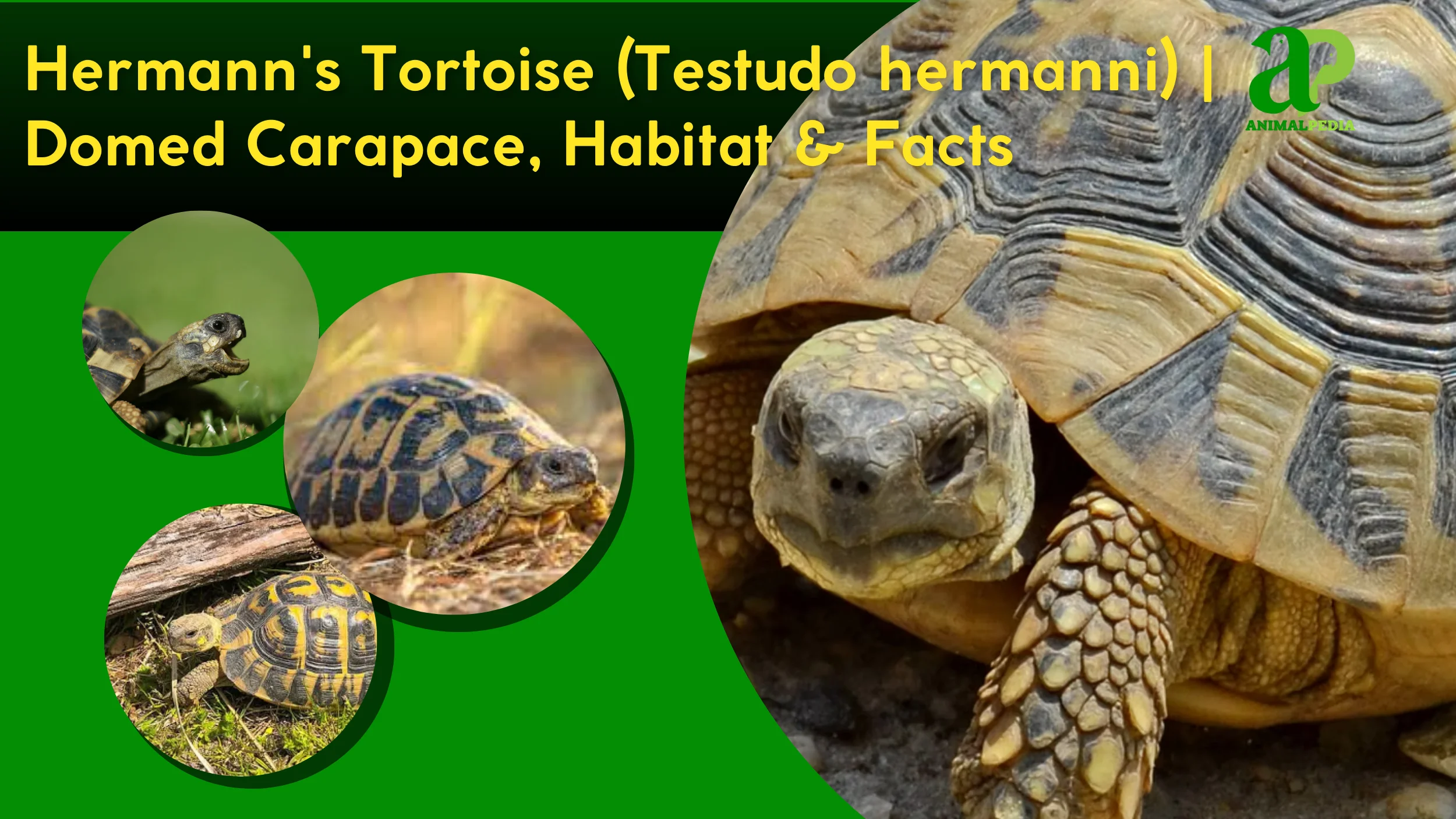Pond sliders (Trachemys scripta) are a species of semi-aquatic turtle belonging to the family Emydidae, a group that includes many common freshwater turtles. The species is characterized by its relatively small to medium size, with individuals reaching up to 12 inches (30.5 cm) in carapace length and weighing up to 6.8 pounds (3.1 kg).
While native to the southeastern United States and Mexico, this adaptable reptile has established populations on every continent except Antarctica, a direct result of its global popularity within the pet trade. Their omnivorous diet allows them to consume a variety of plants and small animals, a flexibility that contributes to their success in diverse environments, while their diurnal habits mean they are most active during the day, frequently observed basking on logs or rocks to thermoregulate.
The species’ adaptability has allowed it to thrive in a wide range of aquatic habitats, from ponds and lakes to slow-moving rivers and wetlands. Their current conservation status is listed as Least Concern by the IUCN, reflecting the species’ widespread presence and the stability of its native populations.
This guide offers a factual exploration of the pond slider, including an examination of its taxonomy, physical characteristics, and the ecological dynamics that make it such a successful colonizer. Understanding the biology of the pond slider provides insight into how a single species can alter ecosystems far beyond its native range, raising important questions about the responsibilities associated with the exotic pet trade.
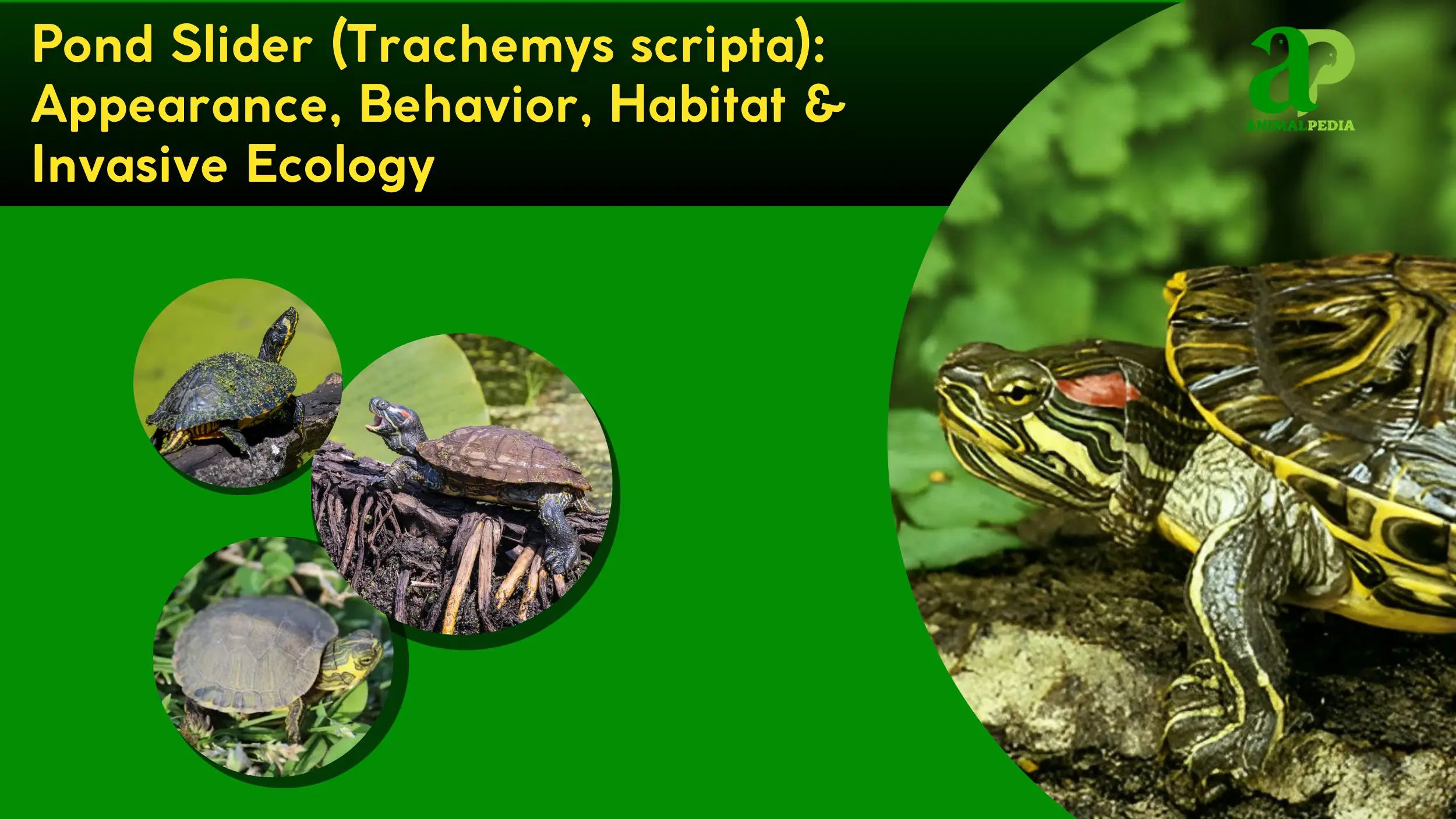
What Are Pond Sliders?
Pond sliders are a semi-aquatic turtle species, native to the Americas, known for their distinct shell markings and a behavioral tendency to bask in the sun. The species is scientifically classified as a reptile within the order Testudines, family Emydidae, and genus Trachemys.
This taxonomy categorizes them alongside other freshwater and semi-aquatic turtles, such as the painted turtle (Chrysemys picta). Their full scientific name is Trachemys scripta.
The species is not a single entity but a group of three recognized subspecies, which include the red-eared slider (T. s. elegans), the yellow-bellied slider (T. s. scripta), and the Cumberland slider (T. s. troostii). The red-eared slider subspecies is particularly well known and comprises the majority of the global invasive population (4).
The species was first described in 1783 by Carl Peter Thunberg, a student of Carl Linnaeus, who originally named it Testudo scripta. It has since undergone taxonomic revision, with its current placement within the genus Trachemys reflecting its close relationship to other American pond turtles.
The red-eared slider’s popularity as a pet has led to its common name and extensive introduction globally, with established populations documented in Europe, Asia, and Australia (4). This widespread distribution makes the pond slider one of the most successful and widespread invasive reptile species in the world, with confirmed ecological impacts on native aquatic ecosystems.
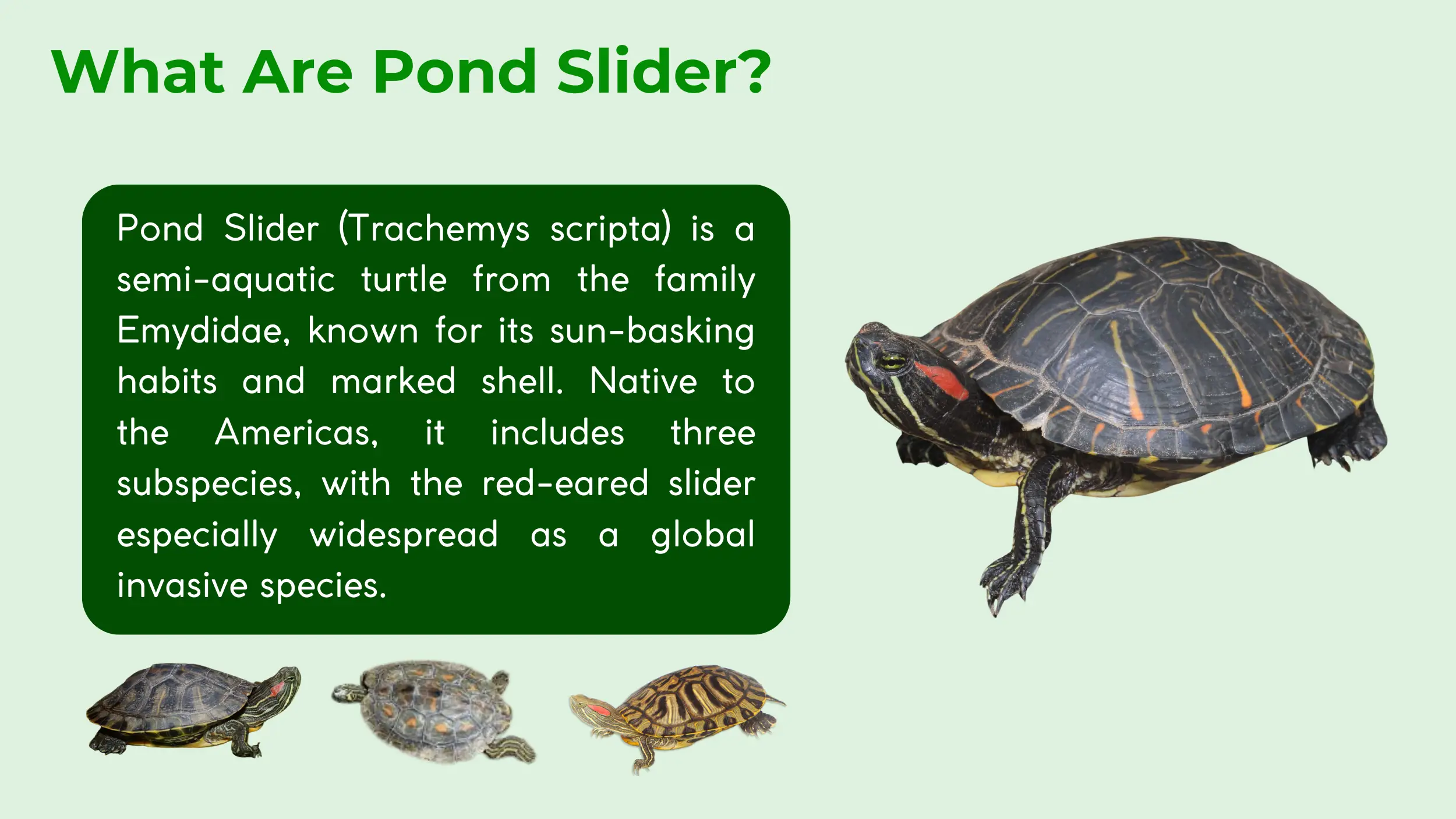
Now that the pond slider’s identity has been established, we can examine its distinct appearance. Understanding these physical traits provides a foundation for identifying the species and its various subspecies in the field.
What Do Pond Sliders Look Like?
Pond sliders possess a distinctive coloration and body structure that helps identify them. The carapace, or upper shell, is smooth and oval, typically with a slightly raised central keel that is more prominent in juveniles. The overall color is an olive green or brown with yellow, wavy lines and patterns across the shell.
The skin on the head, neck, and limbs is a mottled olive with prominent yellow stripes, particularly on the legs and neck (9). These markings provide a form of camouflage within their vegetated aquatic habitats, blending them into submerged plants and algae. The plastron, or underside shell, is yellow with dark, symmetrical markings that are highly variable between individuals and subspecies.
Pond sliders exhibit five distinctive physical features that distinguish them. These characteristics range from obvious facial markings to subtle differences in limb anatomy.
- Distinct Facial Stripe: The most notable characteristic is the prominent stripe located behind each eye. This stripe is a bold red in the red-eared slider (T. s. elegans) and a bright yellow in the yellow-bellied slider (T. s. scripta) (3). This feature is often the primary method for subspecies identification.
- Webbed Feet: The pond slider’s feet are fully webbed between the toes, an adaptation that makes them efficient swimmers. The claws are strong and sharp, used for gripping, climbing, and defense.
- Mottled Plastron: The yellow plastron features a unique pattern of dark splotches or lines. This pattern is not uniform and can be used to distinguish individual turtles (3).
- Smooth Carapace: Unlike some other turtles with ridged or rough shells, the pond slider’s carapace is relatively smooth. Its shape and texture assist in streamlined movement through water.
- Elongated Tail: The species has a moderately long tail, which provides balance while swimming and basking.
Pond sliders display sexual dimorphism in several physical aspects. Adult males are generally smaller than females but have several distinctive features. Males possess elongated front claws, which are used in a courtship display where they vibrate their claws in front of the female’s face.
They also have a longer, thicker tail with their cloaca positioned further down the tail than in females. In contrast, females have shorter front claws, a shorter and thinner tail, and a larger overall body size (3).
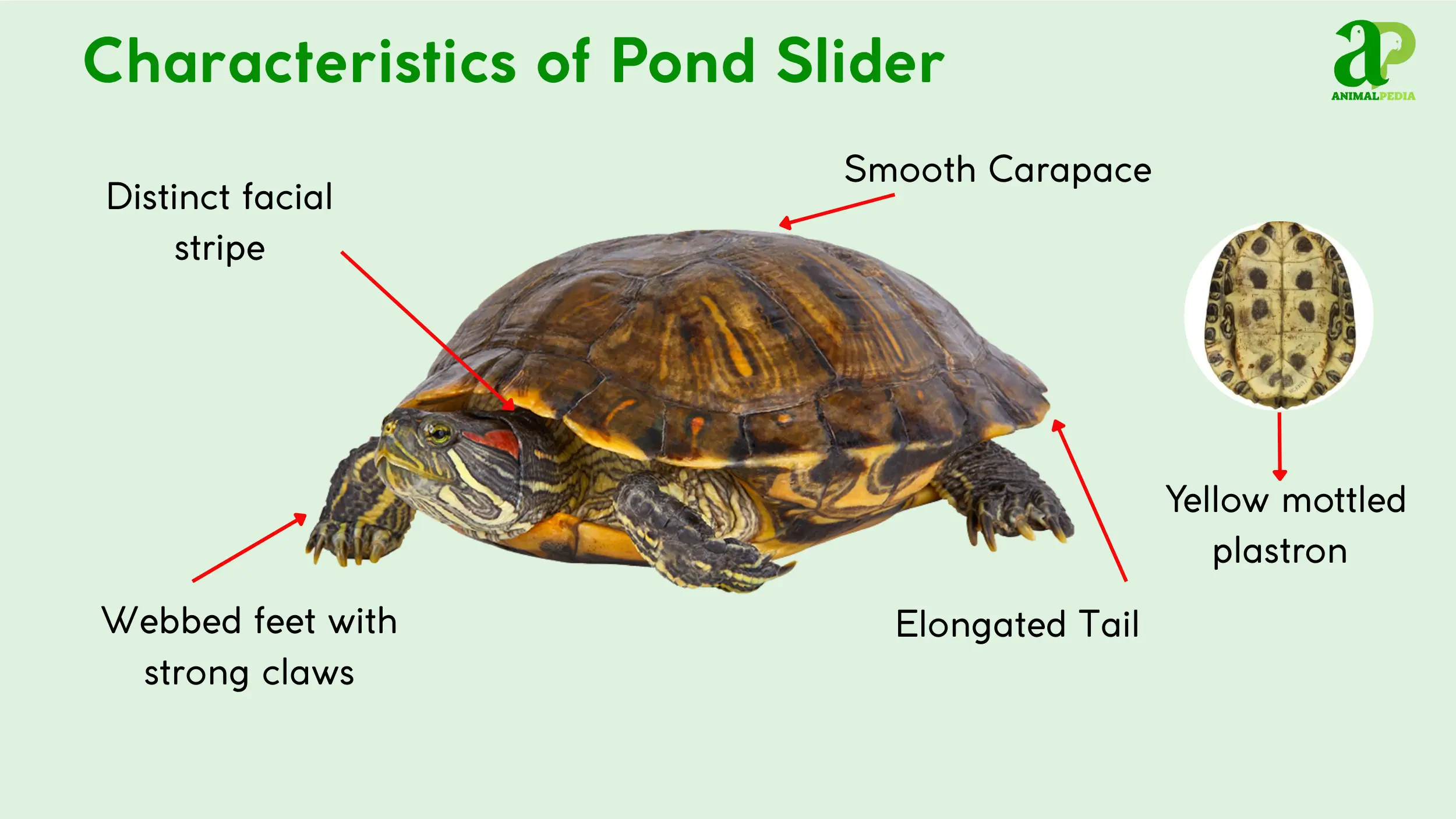
Beyond their coloration and features, the pond slider’s physical dimensions play a crucial role in its identity. A closer look at their size provides insight into their growth patterns and how they compare to other turtles.
How Big Are Pond Sliders?
Adult pond sliders reach an average carapace length between 5 and 11 inches (12.7 and 27.9 cm), with females being larger than males. The size difference is a significant aspect of the species’ biology, with females often reaching greater weights and lengths.
| Length | Weight | Record Size | |
| Male | 5-9 in (12.7-22.9 cm) | 1.1-2.2 lbs (0.5-1.0 kg) | 12.2 in (31.0 cm) |
| Female | 7-11 in (17.8-27.9 cm) | 2.2-6.8 lbs (1.0-3.1 kg) | 16.9 in (43.0 cm) |
Hatchlings are quite small, typically measuring just over 1 inch (2.5 cm) in diameter, about the size of a U.S. quarter. They undergo rapid growth during their juvenile stage, reaching adult size within a few years. Adults continue to grow throughout their lives, but at a much slower rate.
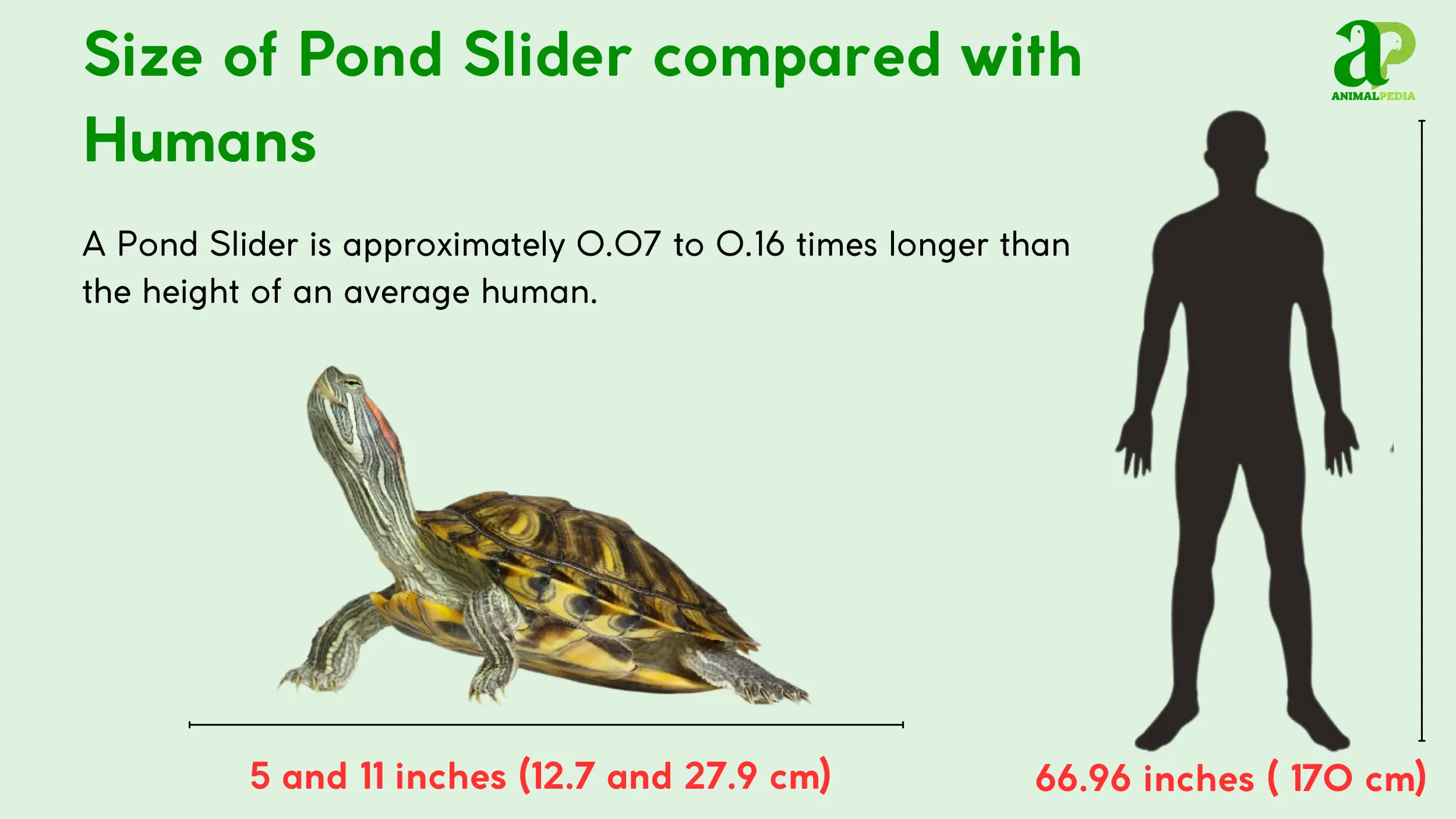
A turtle’s size often relates directly to its environment. The next section explores the places where pond sliders make their home and how they have managed to establish themselves so widely across the world.
Where Do Pond Sliders Live?
Pond sliders are native to the southeastern United States and northeastern Mexico, but their extensive introduction has made them a cosmopolitan species. Their native range covers the Mississippi River Basin and extends from the central Midwest to the Gulf Coast (10).
Due to the pet trade, they have been introduced to aquatic systems on all continents except Antarctica. These established populations now exist across Europe, Asia, Australia, and parts of Africa, often with negative ecological consequences (4).
The species favors warm, freshwater environments with slow-moving water, soft bottoms, and dense vegetation. Ideal habitats include ponds, lakes, swamps, marshes, and slow-moving streams (10). They prefer areas with basking sites like logs, rocks, or floating debris.
While they are highly adaptable, pond sliders require a climate with suitable temperatures for thermoregulation and overwintering. They will burrow into the mud at the bottom of a pond to hibernate during cold periods. Their territorial behavior is limited to male-male aggression during breeding season, and they typically occupy a home range rather than a strictly defended territory.
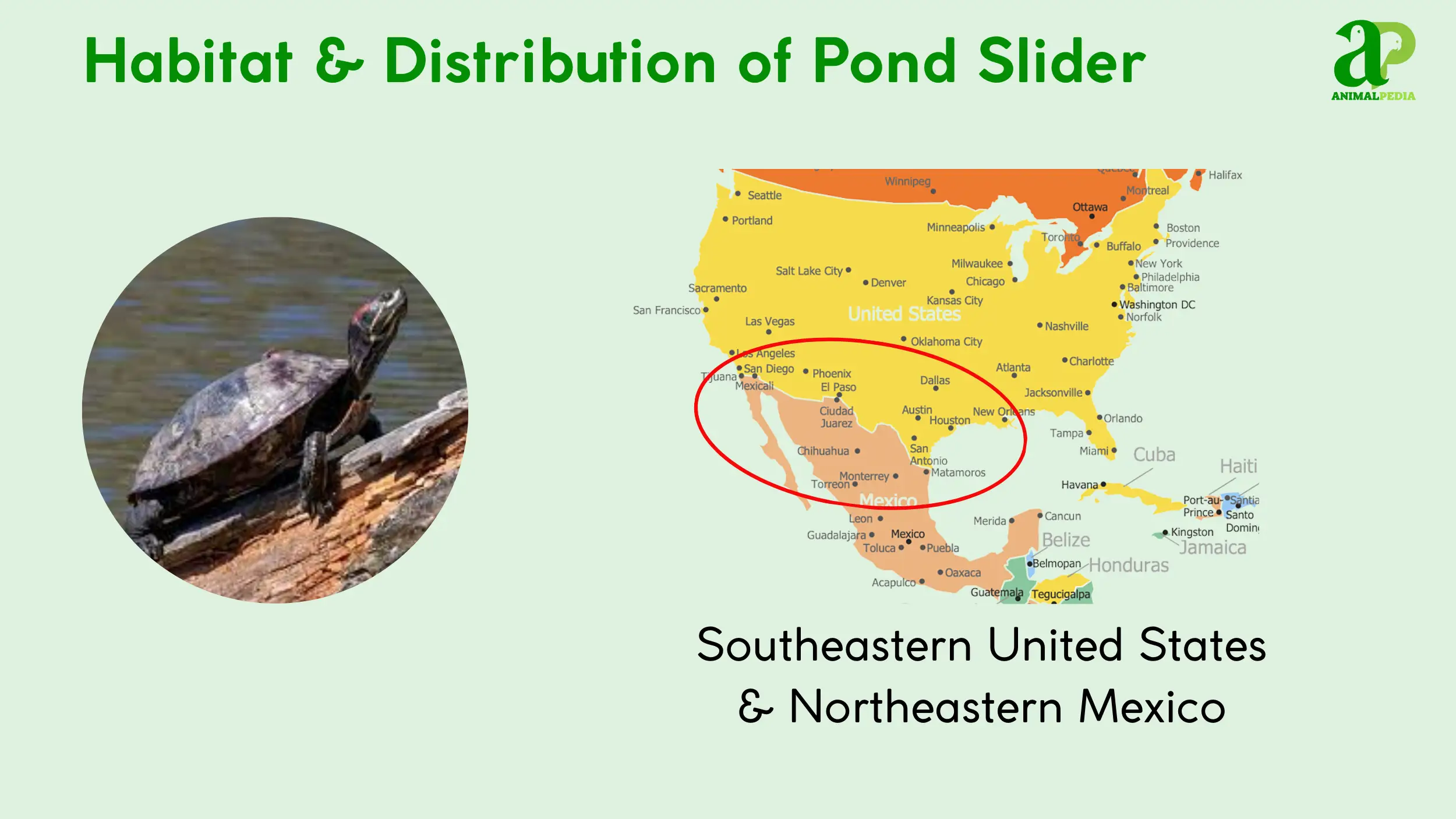
The pond slider’s ability to thrive in so many locations is directly linked to its habits. Their daily and seasonal routines, along with their feeding and movement patterns, offer a clear picture of how they adapt to new surroundings.
How Do Pond Sliders Behave?
Pond sliders are a highly adaptable class of reptiles with behaviors that reflect their semi-aquatic lifestyle, including a varied diet, efficient movement in both water and on land, and distinct daily and seasonal activity patterns.
- They are opportunistic omnivores that shift their diet from primarily meat to a more herbivorous one as they mature.
- Their movement is a combination of powerful swimming and deliberate terrestrial locomotion, allowing them to travel between bodies of water.
- They exhibit a diurnal cycle, being active during the day, and enter a state of brumation during the colder months to survive harsh temperatures.
A comprehensive look into their behavioral biology reveals how these patterns contribute to their success.
Diet and Feeding
Pond sliders are omnivores that consume a wide range of food, with a diet that changes as they age. Hatchlings and juveniles are primarily carnivorous, feeding on insects, tadpoles, small fish, and carrion (11). As they mature, their diet becomes increasingly herbivorous, with aquatic plants, algae, and pondweed comprising a larger portion of their food intake.
A study found that adult pond sliders have a diet consisting of approximately 90% plant matter by volume (11). Their hunting behavior is opportunistic; they typically ambush small prey in the water or consume slow-moving organisms. They lack teeth and use their sharp, horny jaws to tear and shred food. Feeding activity is directly related to water temperature, with increased consumption during warmer months.
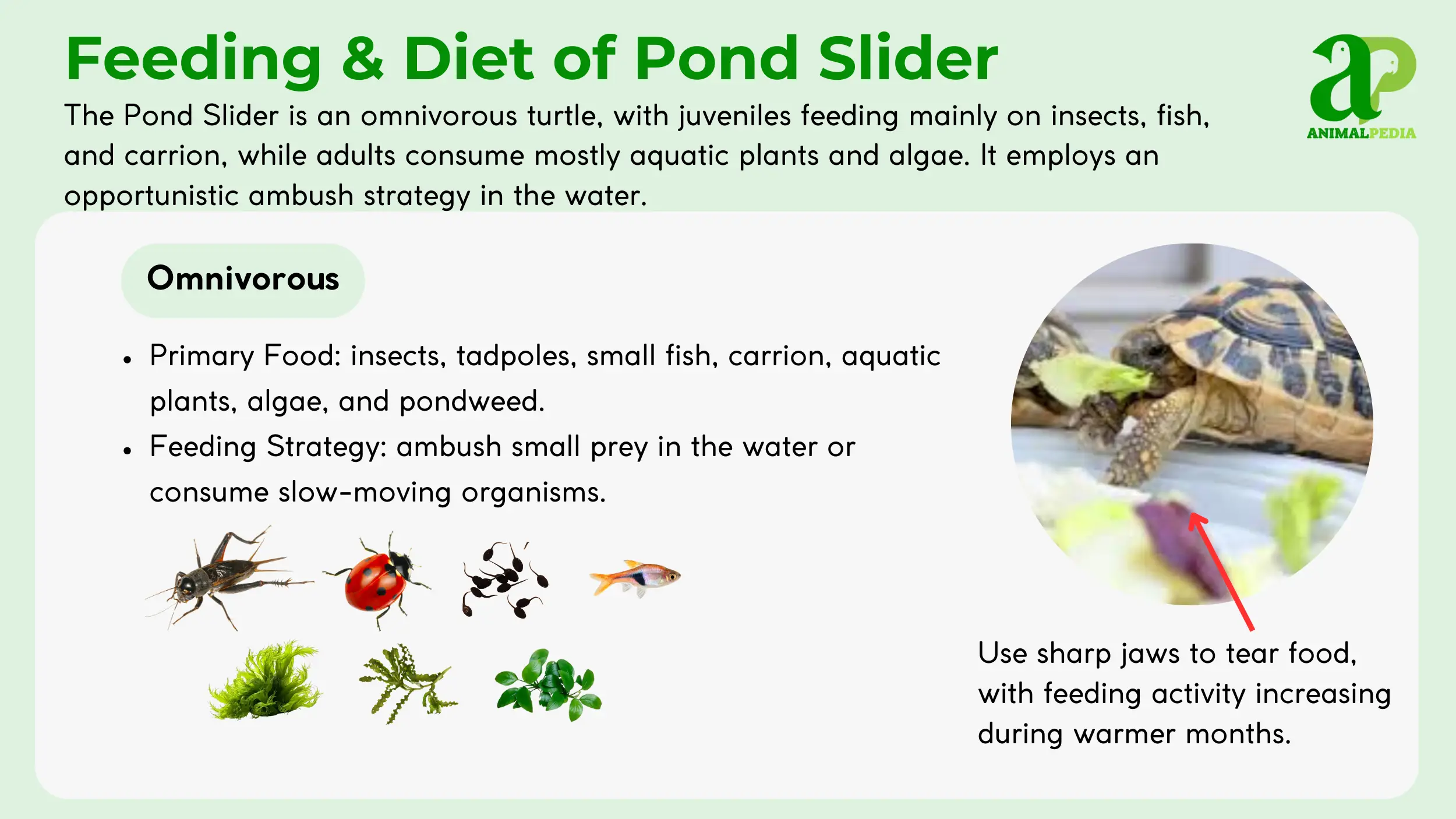
Movement and Abilities
Pond sliders move in ways that are perfectly suited to their environment, combining powerful swimming with slow but deliberate terrestrial locomotion.
- Swimming: In the water, pond sliders propel themselves using their strong, webbed feet. They are agile and can swim quickly for short bursts, allowing them to pursue prey or escape predators.
- Terrestrial Locomotion: On land, pond sliders move with a slow, deliberate crawl. While not fast runners, their powerful limbs allow them to climb over obstacles and travel significant distances to find new habitats or nesting sites. They do not have a documented top speed on land, but their movement is purposeful. A notable special ability of the pond slider is its ability to retract its head and limbs entirely into its hard shell for protection. This physical capability provides a defense against many predators (3).
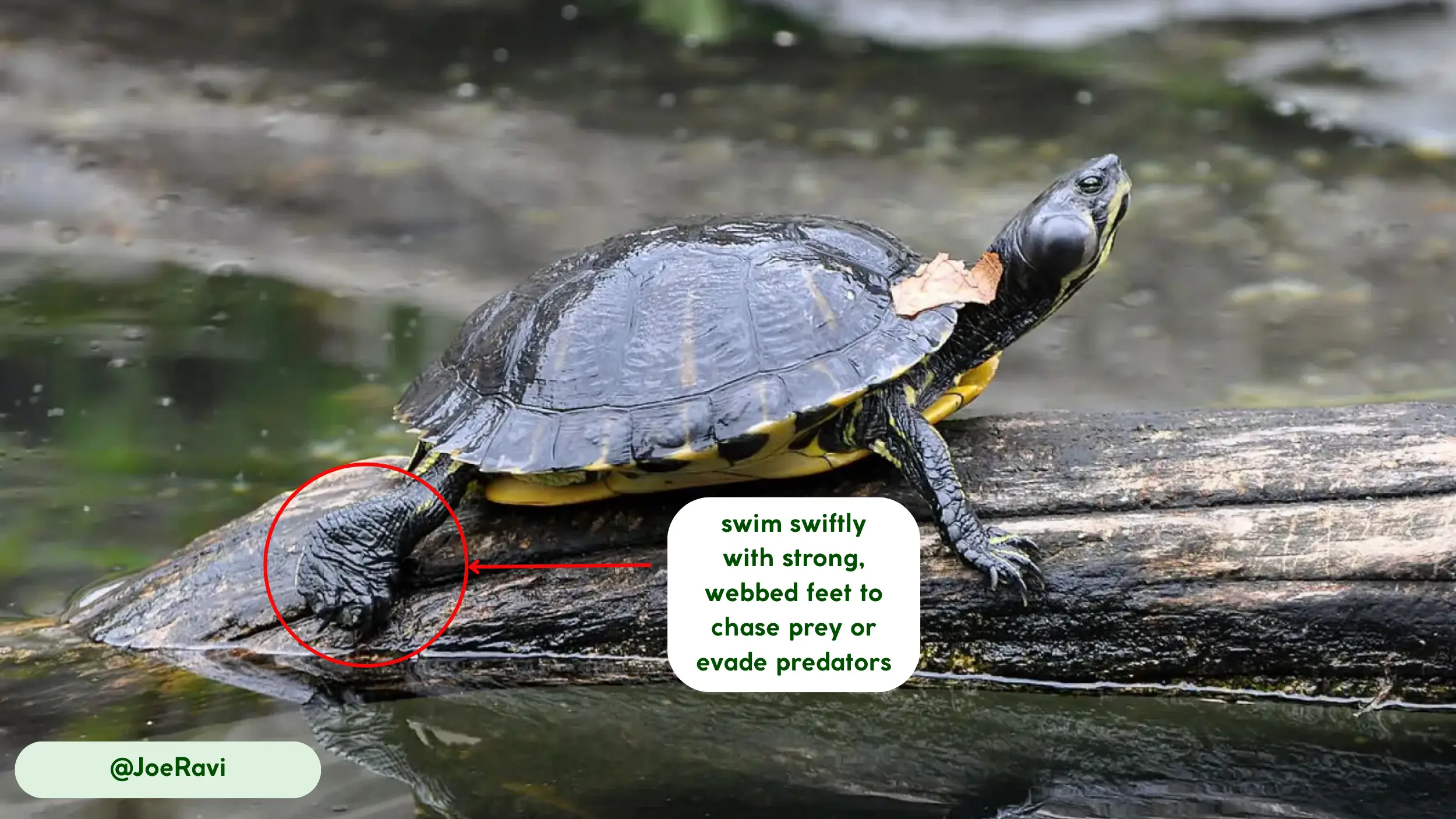
Daily/Seasonal Patterns
Pond sliders are most active during daylight hours, a diurnal behavior that is heavily influenced by environmental temperature. Their daily activity cycle is centered around basking and foraging.
- Morning: They emerge from the water to bask in the sun, a critical activity for thermoregulation and vitamin D synthesis.
- Midday: They often move back into the water to forage for food as water temperatures rise.
- Evening: As evening approaches, they return to the water and seek shelter at the bottom for the night. They are most active seasonally during the warm spring and summer months when temperatures are optimal for feeding and reproduction. During the cold winter months, pond sliders enter a state of brumation, a state of inactivity similar to hibernation. They will bury themselves in the mud at the bottom of a pond or lake, where they can survive for months without food or air by absorbing oxygen through their skin (8). Pond sliders do not undertake long-distance migrations, but they will travel short distances between aquatic habitats to find new food sources or mates.
The specific behaviors that allow pond sliders to survive and flourish culminate in their ability to reproduce. This complex process ensures the continuation of the species and is an interesting part of their life cycle.
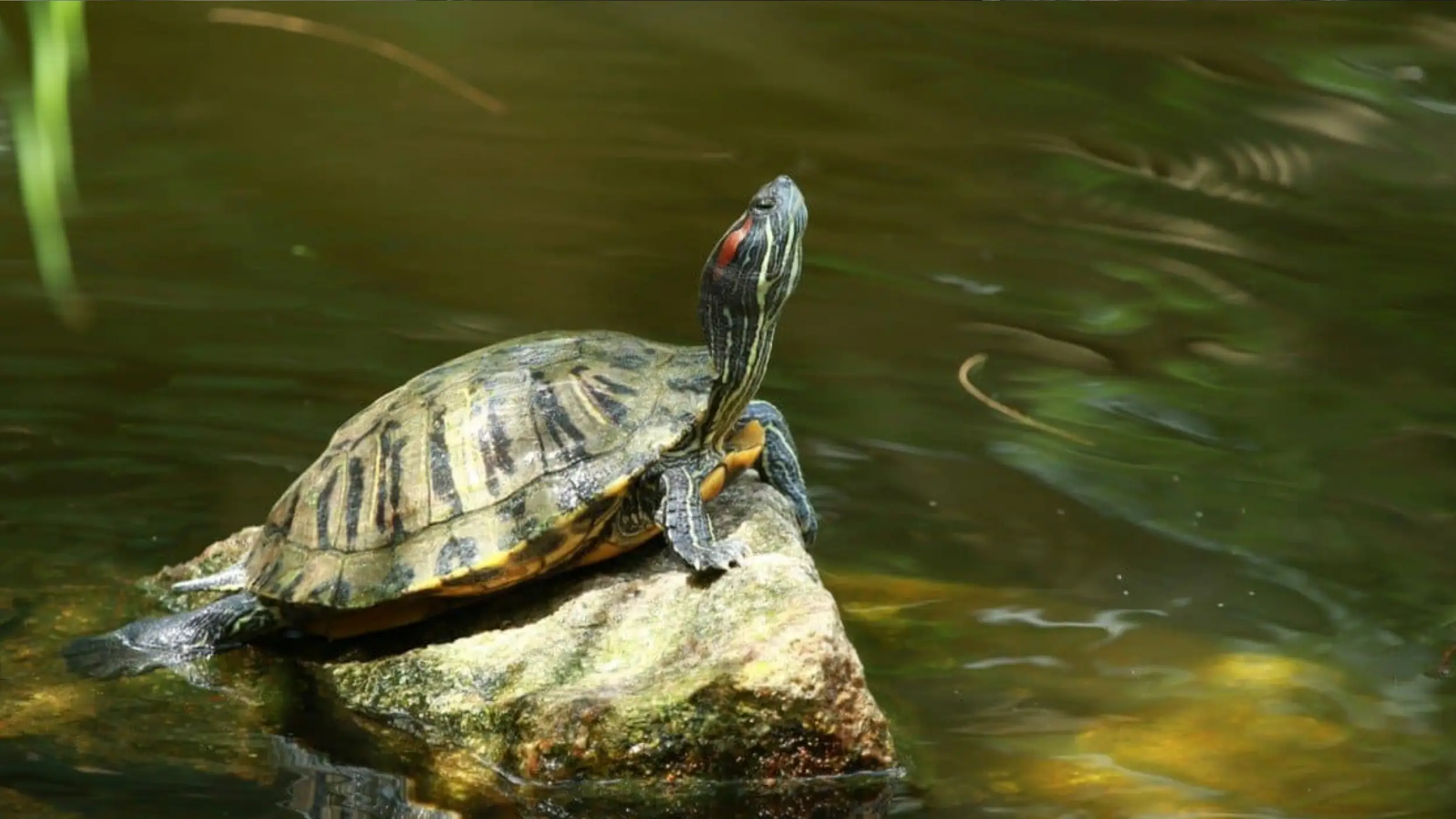
How Do Pond Sliders Reproduce?
Pond sliders are oviparous, meaning they lay eggs. The mating season typically occurs in the spring and early summer, triggered by rising water temperatures. Courtship involves an elaborate ritual where the male faces the female in the water and uses his elongated front claws to stroke or “tickle” her face, a behavior believed to signal his fitness (5).
After mating, the female travels to a nesting site on land, often a sunny area with soft soil. She digs a flask-shaped nest and deposits a clutch of 2 to 20 oval-shaped, soft-shelled eggs (7). The number of eggs can vary depending on the female’s size and age. Pond sliders exhibit no parental care after the eggs are laid; the female leaves the nest, and the hatchlings are on their own when they emerge.
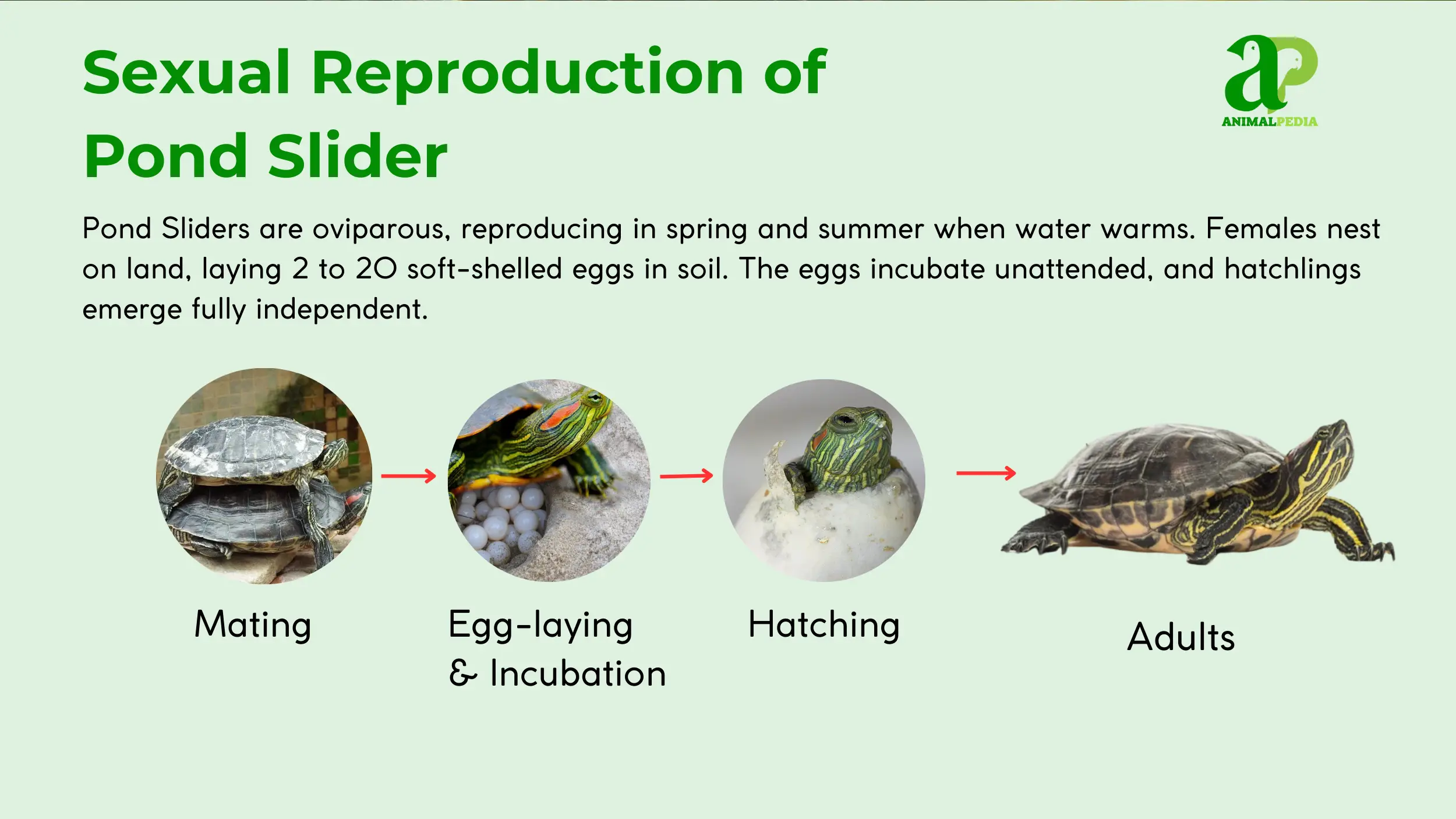
The successful hatching of new turtles marks the beginning of a long life. The following information explores the impressive longevity of the pond slider and the factors that contribute to its lifespan in the wild and in captivity.
How Long Do Pond Sliders Live?
Pond sliders live about 20 to 30 years on average in the wild, with a much longer lifespan in captivity. The controlled environment of captivity offers consistent food sources, protection from predators and disease, and access to veterinary care, allowing many individuals to reach 50 years or more (1).
The species reaches sexual maturity between 2 to 5 years for males and 5 to 7 years for females, though this can be influenced by environmental factors such as food availability and temperature (7). Longevity is affected by diet, habitat quality, and predation. In the wild, younger turtles face a high mortality rate from predators like raccoons, foxes, and large birds.
Given their long lives, pond sliders occasionally come into contact with humans. A critical part of understanding this species is knowing how to safely interact with them and the potential health concerns involved.
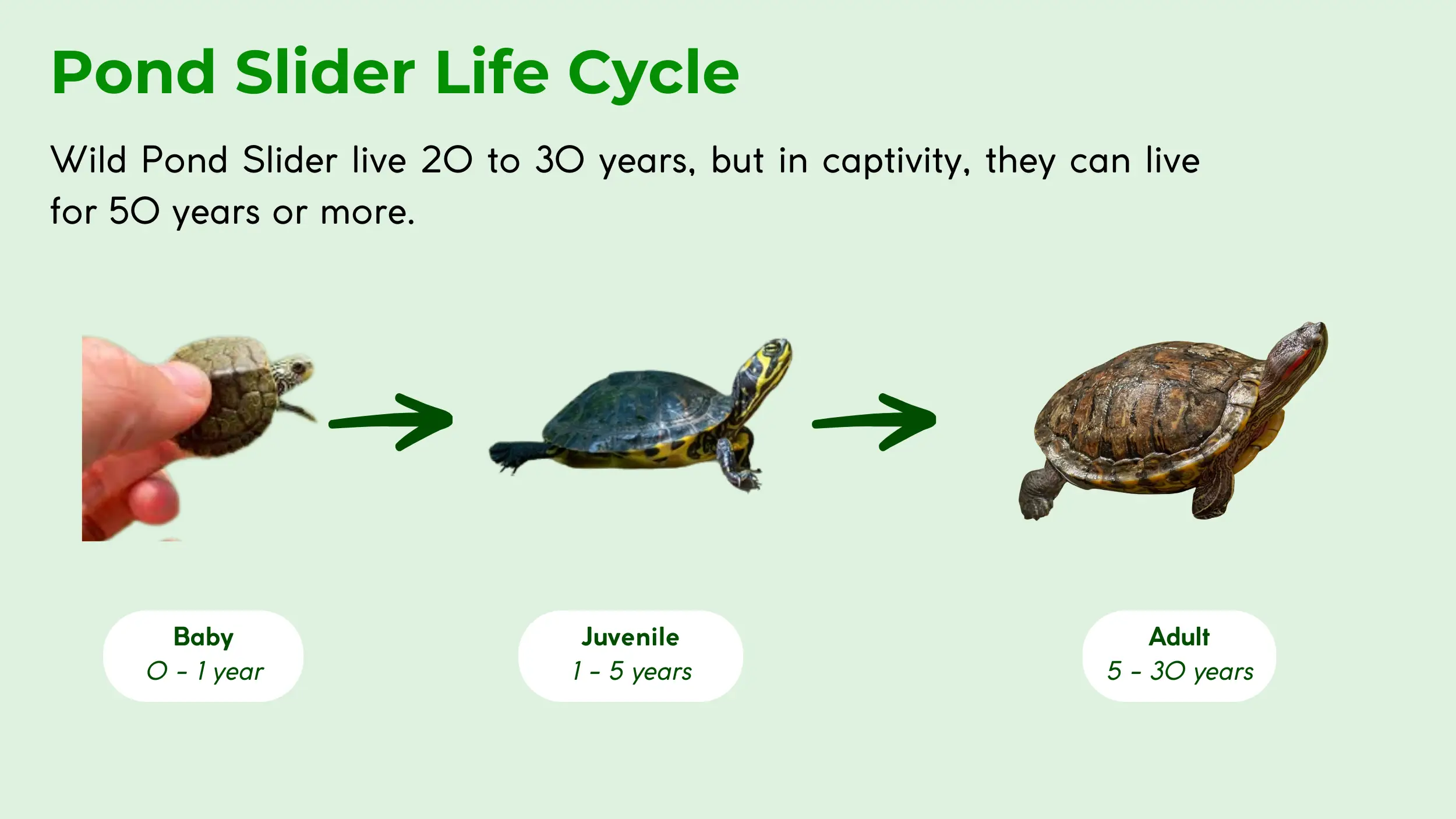
Are Pond Sliders Harmful to Humans?
Pond sliders are not inherently dangerous to humans, lacking venom or any aggressive tendencies unless provoked. Their primary defense is to retreat into their shell, though they will bite if handled roughly or feel threatened. While a bite can be painful, it is not medically significant.
The main health concern associated with pond sliders is their potential to carry Salmonella bacteria on their skin and shells (2). This bacterium can cause a severe gastrointestinal illness in humans, particularly young children, the elderly, or those with weakened immune systems. The risk is minimized by avoiding contact with the turtle’s mouth and washing hands thoroughly after handling the animal or any objects from its habitat.
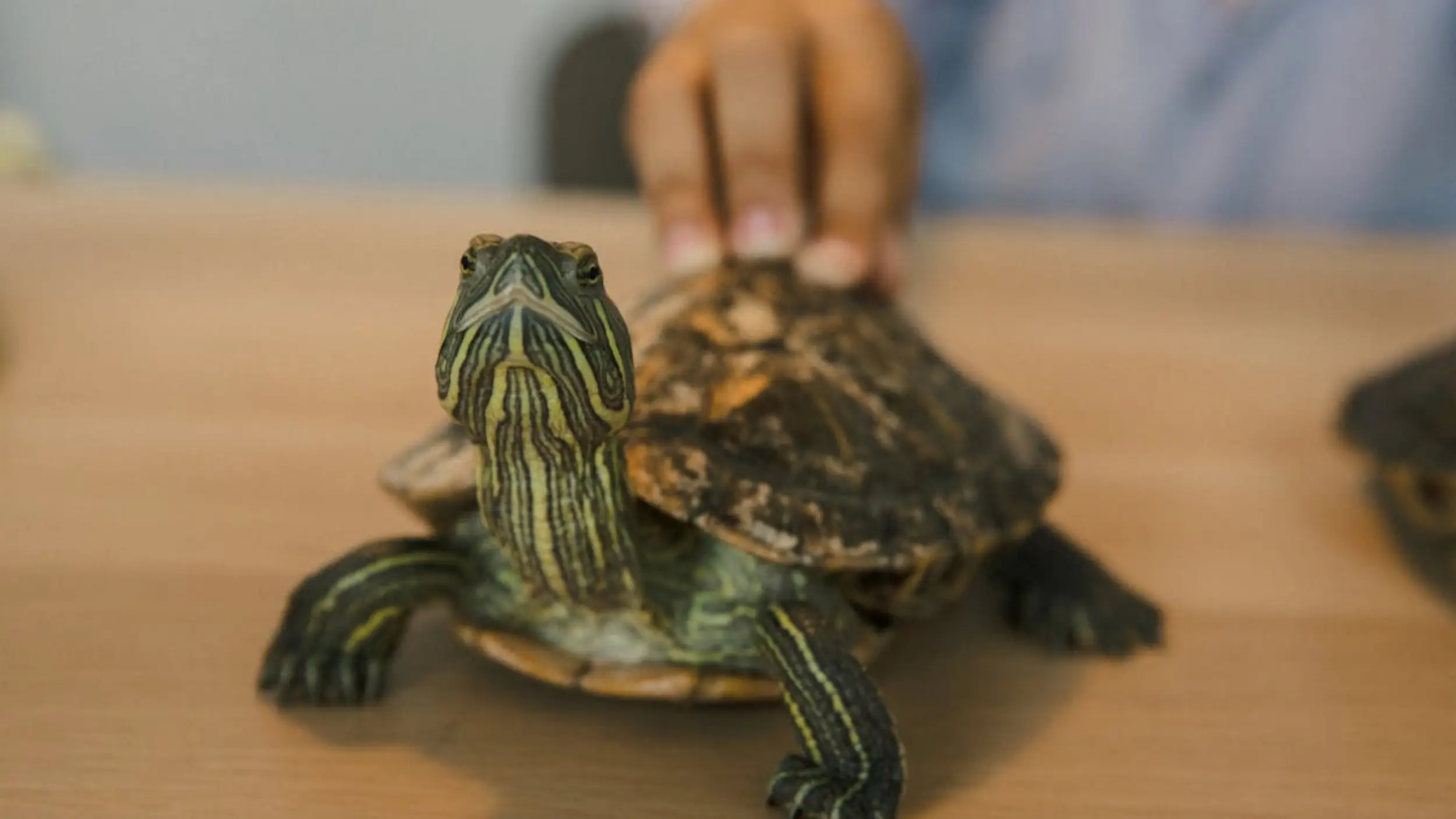
While direct contact poses a minor risk, the pond slider’s status as an invasive species raises broader ecological concerns. The next section provides a clear view of their conservation status and the reasons behind it.
Are Pond Sliders Endangered?
Pond sliders are not endangered, and their conservation status is listed as Least Concern by the IUCN Red List (8). The species’ ability to adapt to a wide range of habitats and its high reproductive rate have contributed to its success, resulting in stable and widespread populations in its native range.
The main threats to pond sliders include habitat loss from urbanization, water pollution, and being hit by vehicles. They also face a threat from their status as an invasive species in non-native environments, where they compete with local turtle species for resources and basking sites. Individuals can help by never releasing pet turtles into the wild and by supporting organizations that work to protect freshwater habitats.
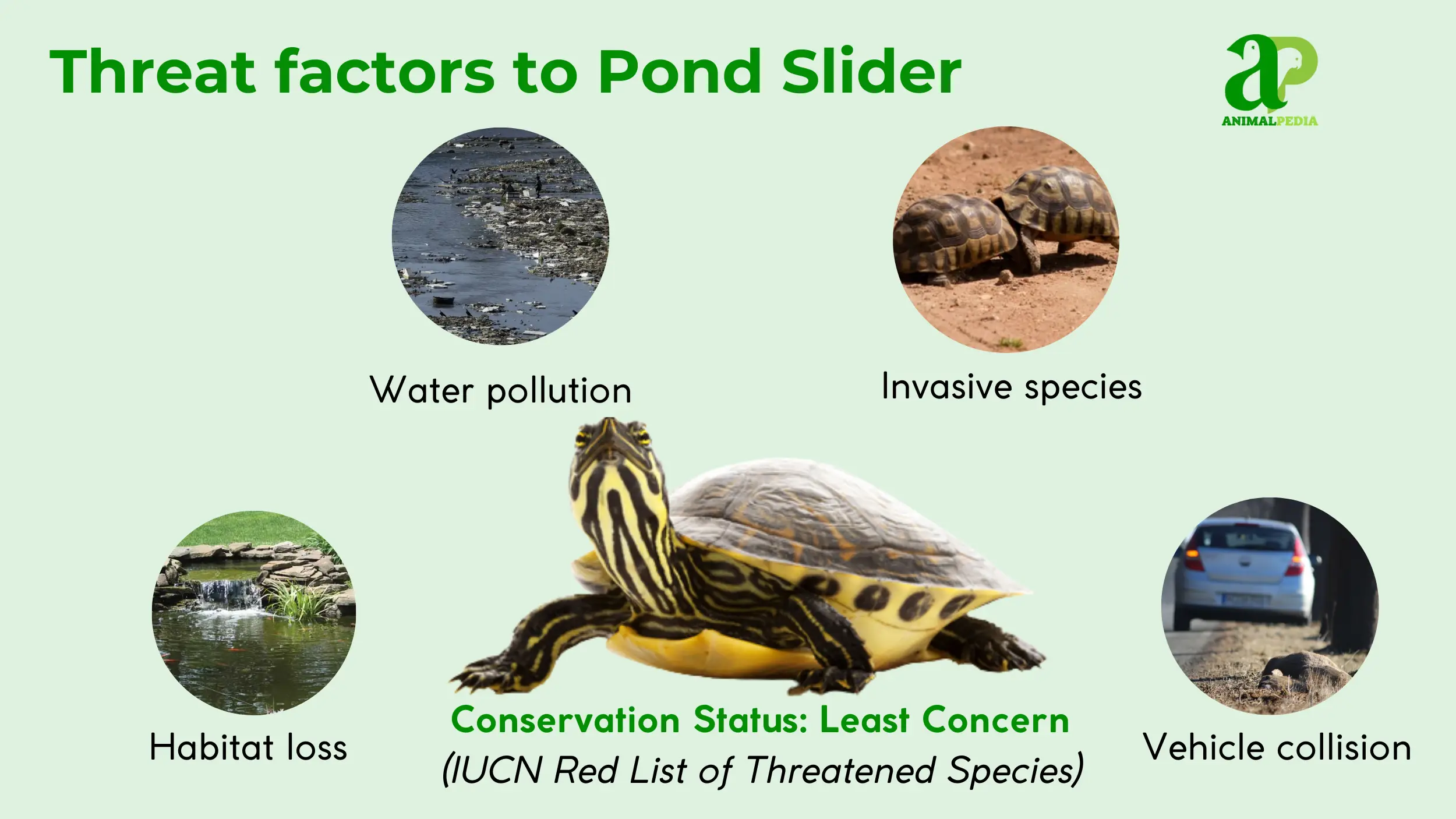
Frequently Asked Questions About Pond Sliders
What eats Pond Sliders?
Pond Sliders have several natural predators, particularly when young. Their eggs and hatchlings are vulnerable to predators such as raccoons, foxes, and snakes. Large birds, such as herons, and alligators are known to prey on adult turtles, though their hard shell provides significant protection.
How fast do Pond Sliders grow?
Pond Sliders experience rapid growth in their first few years of life, typically reaching sexual maturity within five years. Growth rates slow down considerably once they become adults, with females often reaching larger sizes than males. This growth is highly dependent on food availability and environmental conditions.
Do Pond Sliders sleep underwater?
Yes, Pond Sliders can sleep underwater. They can remain submerged for long periods by entering a state of brumation during winter, where their metabolic rate drops significantly. They can also simply rest on the bottom of a pond or lake, using their ability to absorb oxygen through their skin.
Do pond sliders bite?
Pond sliders will bite if they feel threatened or are handled improperly. Their bite can be powerful, but they are not venomous. They are typically docile creatures that prefer to withdraw into their shell as a primary defense mechanism, making biting a last resort.
Conclusion
The pond slider is a testament to the adaptability of reptiles, possessing the ability to colonize new environments far from its native range. The species’ success, driven by its flexible diet, efficient reproduction, and unique survival behaviors, offers a valuable case study in ecological resilience and the impacts of the global pet trade.
Their presence on nearly every continent underscores the importance of responsible pet ownership and understanding the broader implications of human activities on wildlife.
Animal Pedia provides comprehensive, fact-based content to foster a deeper understanding of the animal kingdom. We invite you to continue your exploration of Earth’s diverse fauna by exploring our extensive collection of articles on a wide range of species and ecosystems.

